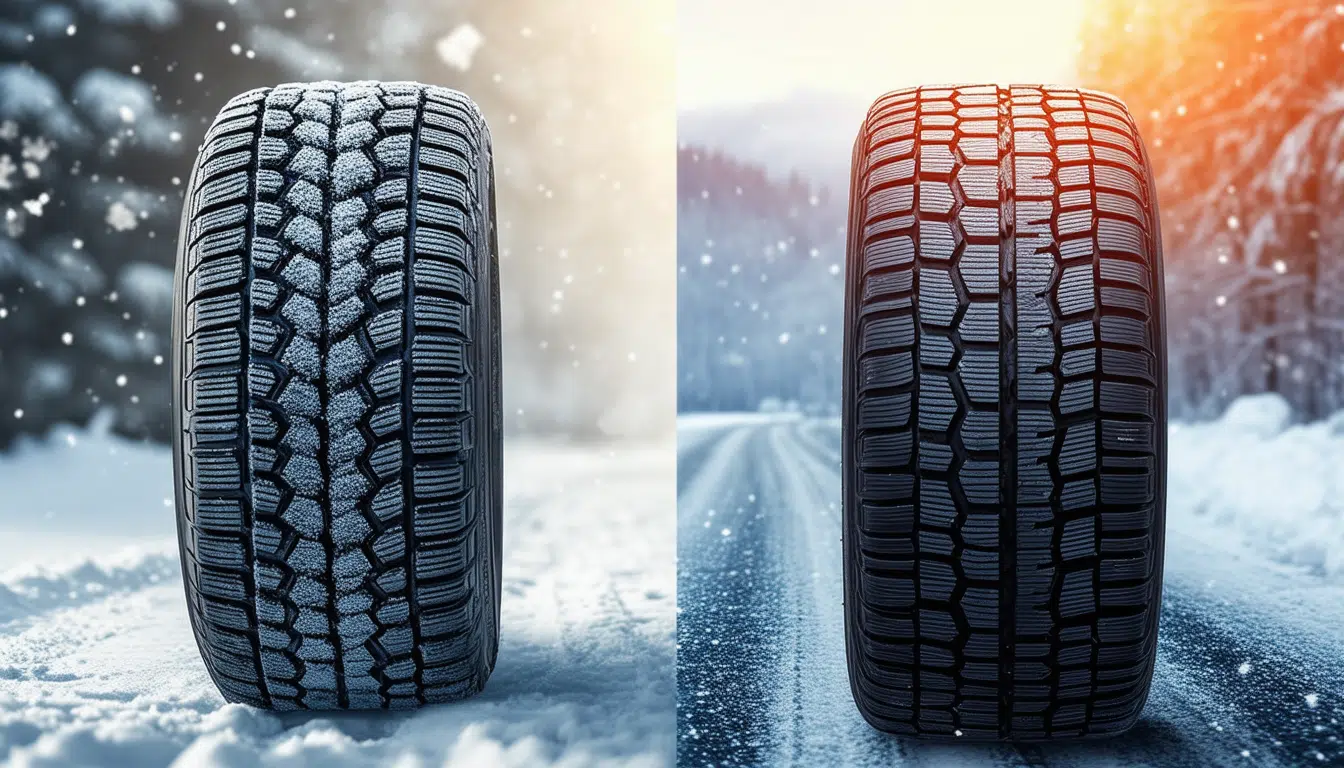Ne Winter tires vs. summer tires: what are the differences?

In the world of motorsport, the choice of tires is a fundamental aspect that determines both the safety and the performance of a vehicle. Winter tires and summer tires have specific characteristics and compositions that adapt to different weather conditions. Often, drivers use inappropriate tires for the season, which can result in increased risks and decreased handling effectiveness. Therefore, it is crucial to understand the notable differences between these two types of tires to ensure a safe and optimized driving experience.
Choosing between winter tires and summer tires is essential to guarantee not only safety on the road but also the vehicle’s performance. Throughout this article, we will explore the key differences between these two types of tires, including their composition, design, and performance in different weather conditions. By knowing these differences, drivers can make more informed and secure choices according to the season.
Rubber composition: a crucial feature
The composition of the rubber in tires is a determining factor in their performance. Winter tires are made with a softer rubber blend that remains flexible at low temperatures, even below 7 °C. This allows them to provide excellent traction on cold surfaces, such as snow and ice. On the other hand, summer tires use a harder rubber designed for higher temperatures, enhancing their performance on dry and warm surfaces.
Tread design: a determining role
The design of the tread also marks a clear difference between the two types of tires. Winter tires are equipped with numerous grooves and sipes that help prevent snow buildup and provide better traction on ice. In contrast, summer tires have a smoother design, with longitudinal channels focused on draining water during rain, reducing the risk of aquaplaning.
Performance according to weather conditions
Performance of winter tires
Winter tires showcase their potential in cold conditions. They provide better grip and braking ability on icy or snowy surfaces. However, their use during warm periods can cause accelerated wear, as the soft compound is not designed to withstand high temperatures.
Performance of summer tires
On the other hand, summer tires offer superior handling in hot conditions. They have excellent stability and control on dry pavement, thanks to their larger contact area. However, their effectiveness significantly decreases when temperatures drop below 7 °C, which can jeopardize the driver’s safety.
Weather conditions: a fundamental factor to consider
The effectiveness of tires varies significantly according to weather conditions. It is recommended to use winter tires in temperatures ranging from -20 °C to 7 °C, being essential in regions prone to snowfall. In contrast, summer tires are ideal when temperatures exceed 7 °C. Using the incorrect type of tire not only affects the durability of the rubber but can also compromise road safety.
Risks of using incorrect tires
Safety risks
One of the main risks of using winter tires in summer is the decreased grip on dry pavement, which can extend braking distances and increase the risk of accidents. Additionally, premature rubber wear can lead to a loss of confidence in driving.
Financial risks
From a financial perspective, the improper use of tires can imply additional expenses. The need to replace prematurely worn tires can be considerable, increasing costs for drivers who do not choose the right options for each season.
The alternatives: All-season tires
All-season tires offer a middle-ground solution, combining features of both winter and summer tires. Although they can perform adequately in various weather conditions, they do not surpass the specific performance of seasonal tires in their respective optimal conditions. This option may be interesting for those who drive in regions with moderate and less extreme climates.
Conclusion
Knowing and understanding the differentiating factors between winter tires and summer tires is crucial for any driver. Informed decisions in tire selection not only optimize vehicle performance but also ensure safety on the road, adapting to the changing weather conditions throughout the year.
Conclusion on winter tires and summer tires
The choice between winter tires and summer tires is crucial for anyone who drives, as each type of tire is designed to fulfill specific functions according to weather conditions. While summer tires are ideal for warm temperatures, offering excellent performance on dry and wet asphalt, winter tires excel in cold climates, ensuring better grip on snow and ice.
The rubber composition is one of the most notable differences. Winter tires are manufactured with a softer rubber blend, allowing them to maintain flexibility even at sub-zero temperatures. On the other hand, summer tires use a stiffer compound, optimized to provide better grip in hot conditions. This variation in composition directly affects the behavior of each type of tire in different weather situations.
Another aspect to consider is the tread design. Winter tires feature deep grooves and sipes that help drain water and improve traction in slippery conditions. In contrast, summer tires have a more uniform pattern that maximizes contact surface with the ground, which is essential on dry roads.
Furthermore, it is important to remember that using incorrect tires in the inappropriate season can significantly increase the risk of accidents and reduce braking effectiveness. Adapting to weather conditions and understanding how each type of tire contributes to road safety is vital for every driver. The correct choice not only ensures safe driving but also optimizes vehicle performance at all times.





